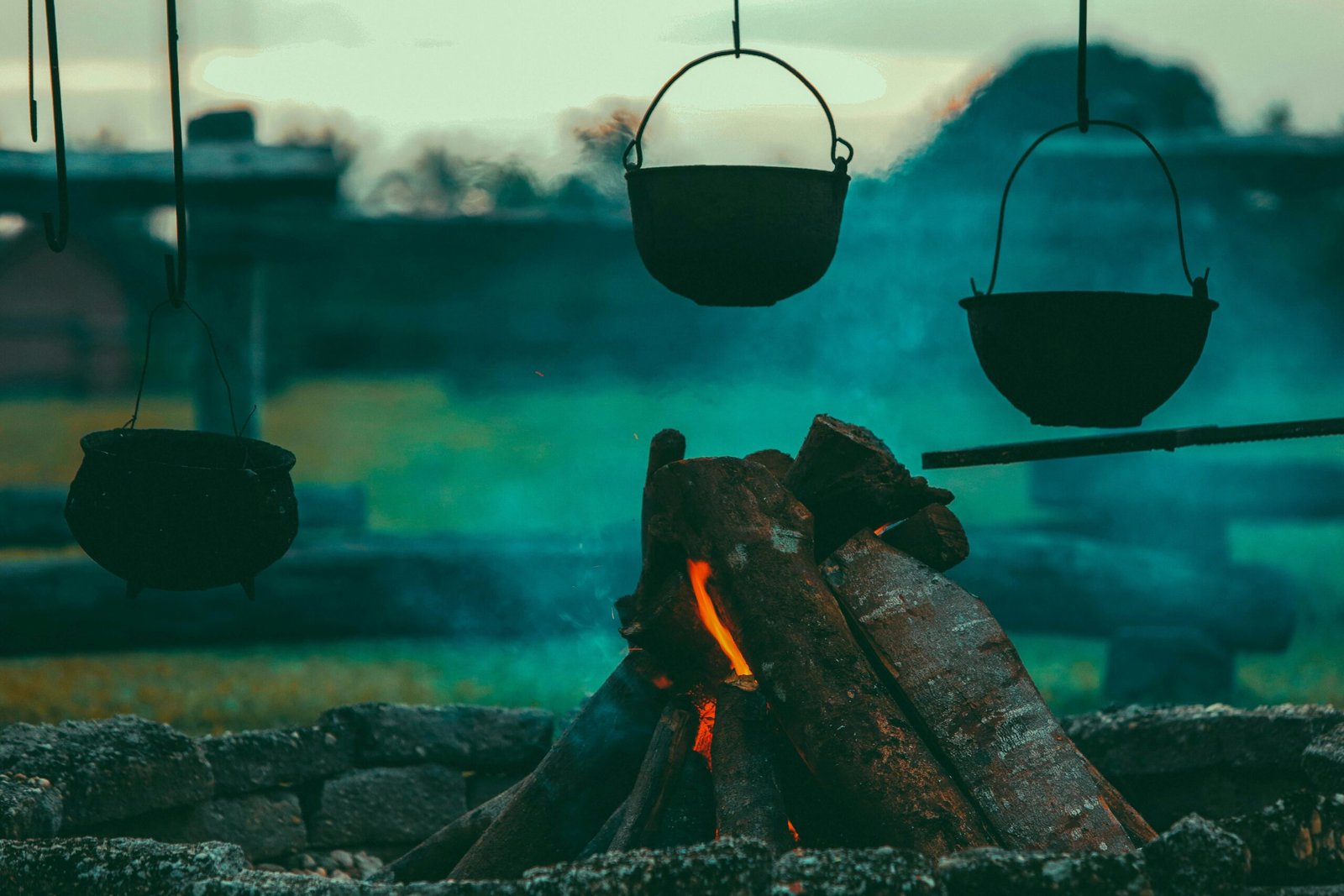Choosing the Right Location and Design
Selecting the ideal location for your DIY fire pit is crucial to ensuring safety and achieving the desired ambiance in your backyard. Begin by familiarizing yourself with local safety regulations and building codes. Many municipalities have guidelines on the minimum distance required between a fire pit and structures or vegetation to prevent fire hazards. Ensure that your chosen spot is at least 10-15 feet away from any buildings, trees, or other flammable materials.
In addition to safety, consider the aesthetics and functionality of the location. Choose a site that is relatively flat and away from high-traffic areas. This will not only enhance the visual appeal of your backyard but also make the fire pit a functional and enjoyable feature for entertaining guests or relaxing evenings.
Once you have selected a suitable location, it’s time to decide on the design of your fire pit. There are several options available, each with its own set of advantages. In-ground fire pits are a popular choice for their sleek, minimalist look and the natural barrier they provide against wind. These are often more permanent and require digging and a bit more planning.
Above-ground fire pits are also common and can range from simple metal bowls to intricate brick or stone structures. These are typically easier to build and offer flexibility in design and placement. Portable fire pits are the most versatile option, allowing you to move the fire pit as needed or store it away when not in use. These units are often made of metal and come in various sizes and styles to fit any backyard aesthetic.
Before you start building, it’s important to check if you need a permit for your fire pit project. Many local authorities require a permit for outdoor fire features, especially those that are permanent. This step will ensure that your DIY fire pit complies with all local regulations, avoiding potential fines or the need to dismantle your hard work.
Gathering Materials and Tools
Initiating the construction of your DIY fire pit begins with gathering the necessary materials and tools. Ensuring that you have the right materials beforehand can streamline your project and ensure a sturdy and durable fire pit. For the fire pit’s structure, consider using heat-resistant bricks, natural stones, metal rings, or concrete. Bricks offer a classic look and can be easily sourced from home improvement stores. Stones provide a more rustic appeal and can often be gathered locally or purchased from landscaping suppliers. Metal rings are essential for containing the fire and adding an additional layer of safety and longevity to the pit.
Concrete is another viable option, especially for constructing a solid foundation. Ready-mix concrete can be purchased from local hardware stores and is easy to work with for forming the base layer. Notably, you might also want to obtain refractory cement, which is designed to withstand high temperatures, for comparatively safe and long-lasting results.
Moving on to essential tools, a basic collection includes shovels, levels, and trowels. Shovels are required for digging the pit and handling concrete, while levels ensure that your construction is even and stable. Trowels are invaluable for spreading and smoothing cement. Don’t forget to have protective gear like gloves, safety glasses, and durable work boots to prevent injuries during the building process.
For enhancements, consider the addition of fire grates and spark screens. Fire grates, placed at the bottom of the pit, support better airflow and make for hotter, cleaner fires. Spark screens contain embers and can prevent unwanted fires from spreading. Also contemplate surrounding your fire pit with comfortable seating options, such as weather-resistant chairs or stone benches, to elevate your backyard experience and maximize comfort.
Where to purchase these items? Local home improvement and landscaping stores are your best bet for securing quality materials and tools. Online retailers can also be a reliable source; however, shipping costs might vary based on weight and distance. Before beginning your endeavor, verifying item availability and preferred delivery times is advisable to ensure a smooth construction process.
Step-by-Step Construction Guide
Constructing a DIY fire pit for your backyard can be a satisfying project that enhances your outdoor space. This step-by-step guide will walk you through the process, ensuring a secure and long-lasting addition to your home.
Step 1: Mark and Dig the Area
Begin by selecting a suitable location for your fire pit. Use spray paint or a rope to mark the perimeter of the fire pit. Once the area is defined, use a shovel to dig about 6-12 inches deep. This depth depends on your fire pit’s desired stability and size. Ensure the dug-out area is level; this will be crucial for the foundation and eventual structure stability.
Step 2: Laying the Foundation
After the area is prepared, lay a bed of gravel about 3-4 inches thick at the bottom. This gravel bed aids in drainage and adds stability to the fire pit base. Compact the gravel using a tamper to ensure it’s even. Mixing and pouring concrete over the gravel is optional but recommended for added durability. If you opt for concrete, mix it according to the manufacturer’s instructions and pour it evenly over the gravel layer. Allow it to cure fully before proceeding.
Step 3: Constructing the Walls
For constructing the walls, use fire-rated bricks or stones to ensure the pit withstands high temperatures. Begin at the outer edge of the foundation, laying the first course of bricks in a circular pattern. Ensure each brick is level before moving to the next. Use mortar between bricks if you wish for added stability. Continue to stack the bricks in successive layers until the walls reach the desired height, usually between 12-24 inches.
Step 4: Finishing Touches
Once the walls are constructed, focus on finishing touches. Fill any gaps between bricks with fire-resistant mortar. Optionally, you can also add a steel ring to the interior of the pit for extra protection. Ensure the structure remains level after these adjustments. Once everything is set, allow the mortar to cure completely before using the fire pit. Finally, place a layer of sand or gravel at the bottom of the pit to aid in drainage and provide a stable base for your fires.
By following these steps diligently, you can construct a sturdy and aesthetically pleasing fire pit, perfect for numerous backyard gatherings.
Safety Tips and Maintenance
Building a DIY fire pit for your backyard brings the promise of enjoyment and warmth, but it also requires a dedicated focus on safety and ongoing maintenance to ensure that it remains a secure and pleasant feature of your outdoor space. Adhering to these safety tips and maintenance guidelines will help you maximize the longevity of your fire pit while minimizing potential risks.
Safety Tips
First and foremost, always keep a fire extinguisher or a bucket of sand nearby when using your fire pit. Immediate access to fire control tools is crucial in the event of an unexpected flare-up. Additionally, ensure children and pets are always supervised around the fire pit to prevent accidents. Establish a clear boundary or barrier to mark the safe zone, alerting them to maintain their distance.
Understanding weather-related fire hazards forms another layer of safety. Avoid using the fire pit during high winds which can cause flames to spread erratically. Similarly, refrain from using the fire pit when there is a fire ban in place in your area, as conditions may be too dry and risky for open flames. Adhering to local fire regulations not only ensures your safety but also helps protect your community.
Maintenance
Regular maintenance is vital for keeping your fire pit in optimal condition. Ensure the fire pit is cleaned out consistently; remove ashes only once they have cooled, and dispose of them appropriately. Check for structural damage frequently, looking out for cracks in the stone or metal that can compromise safety.
Storing fire pit accessories properly also contributes to the longevity of your setup. Keep tools such as pokers and screens in a dry, secure place to prevent rusting or damage. Protecting the fire pit itself with a cover when not in use will shield it from the elements, prolonging its lifespan.
By following these safety and maintenance guidelines, you can enjoy your fire pit responsibly and ensure it’s a welcoming, safe space for family and friends. Remember, the joy of a crackling fire comes with the responsibility of keeping it controlled and well-maintained.



